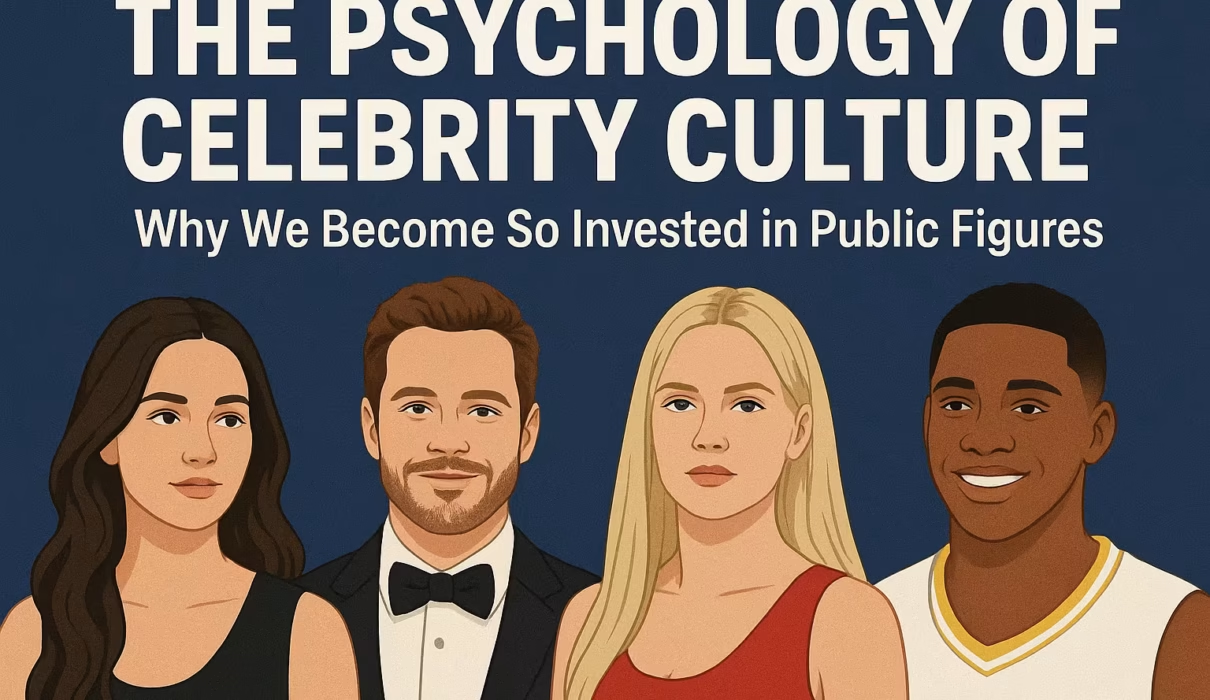We waste hours upon hours watching the news, dissecting fashion decisions, and intensely arguing over the personal lives of individuals we don’t know. Such intense investment in public figures—celebrity culture—is a strong worldwide phenomenon deeply embedded in human psychology. It’s not simply entertainment; it gratifies a number of basic emotional and cognitive desires.
1. The Prosocial Relationship: The Illusion of Intimacy
The key motivator of celebrity investment is the parasocial relationship. It is a one-way psychological connection in which someone feels that they share an intimate, two-way relationship with a public figure, even though the figure does not know they exist.
Proximity and Frequency: Repeated exposure in the media (seeing an actor on TV, reading a celebrity’s posts, listening to them speak) generates a sense of familiarity and closeness, simulating actual friendship.
Intimacy through Sharing: Celebrities tend to share personal experiences, challenges, and vulnerabilities. This managed self-disclosure creates the illusion that the fan is “in on the secret,” enhancing the sense of intimacy.
This illusion is comforting, companionate, and companionship-providing without the complexity or danger of a two-sided relationship.
2. Social Identity and Aspiration: Who We Want to Be
Celebrities tend to be strong role models or, on the other hand, out-groups defining what we do not want. Our stake is frequently an expression of our own identity and aspirations.
Wish Fulfillment: We place our wishes—of wealth, success, beauty, or talent—upon celebrities. Through their career paths, we relive those dreams vicariously, providing a short-lived escape from the reality of our lives.
Group Belonging: Fandom is social identity. Identification with a celebrity enables us to become part of a certain group (a “fandom”). Group membership fulfills the fundamental human need for belonging and shared enthusiasm, creating instant social glue with fellow fans.
Defining Values: If a celebrity supports a cause or leads a certain lifestyle, their fans who share the same views use that celebrity to publicly indicate their own moral or cultural values.
3. Cognitive Shortcuts: Story and Simplification
Human brains are programmed to make sense of the world in story form. Celebrity stories offer simple, engaging psychological fodder.
Simple Stories: Celebrity lives are fitted into engaging, straightforward narratives (the “tragic fall,” the “rise from rags to riches,” the “scandal and redemption”). The stories are simple to follow, dissect, and debate.
Moral Standards: Celebrities are moral and cultural standards. Their failures and successes in the public eye enable us to exercise judgment on character, fairness, and justice from a distance, a need for moral scaffolding.
Managed Risk: Talking about a celebrity’s scandal or divorce enables us to confront taboo subjects like infidelity, addiction, or failure without the emotional pain of having to live it ourselves. It’s an emotional inoculation.
Effectively, our investment in celebrities is an intricate blend of the desire to connect (parasocial relationships), fashioning identity (role models and aspiration), and fulfilling our intellectual need for engrossing, coherent stories about human existence.


